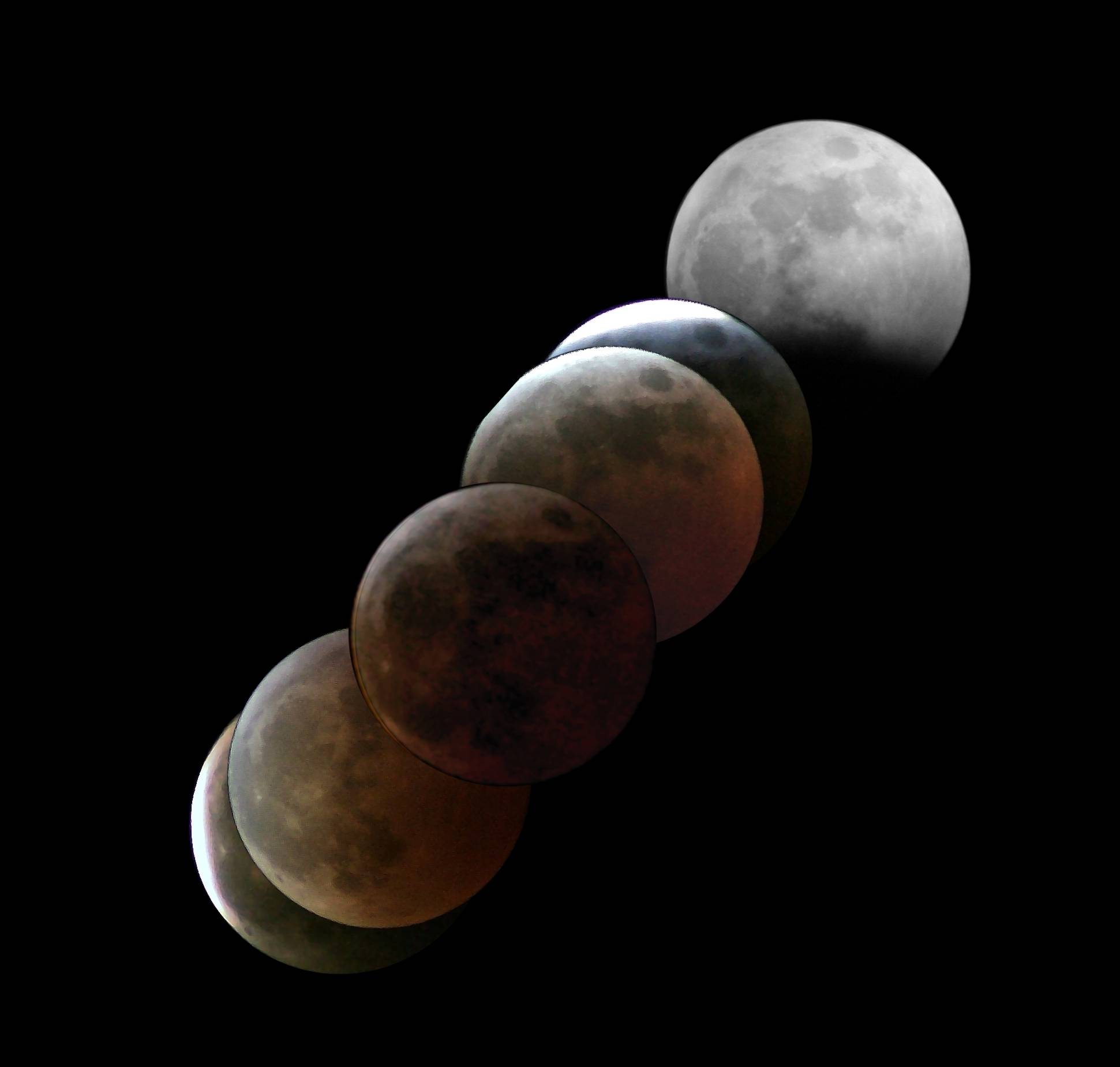
Maansverduistering 3 / 4 - 3 - 2007
A beautiful mooneclips was visible from Holland on 3/4 march 2007. Although clouds sometimes covered the moon, the whole eclipse could be followed. Especially the colours during totality were very beautiful. A mixture of deep-red and orange in the deepest part of the shadow to bright grey/blueish colours to the shadow edge. The moon remained quite bright during totality and structures on the moon were well visible. According to the Danjon Scale the eclipse was estimated to a L=2.5 to 3 (Deep red with a bright edge.). Two friends of mine also estimated the colour to be red (brouwnish) to orange. There was not a great difference in brightness within the shadow. However the shadow edge was noticabily brighter then the rest. The colour of the edge was also quite different. On the NW edge of the shadow it was more grey blue while on the NE edge it was more orange and (greenish) yellow. At the end of totality the moon looked a bit brighter (more orange) then at the beginning. Pictures of both phases with equal exposure time seem to confirm this. This is also visible on the pictures. See also the sketches below.

The moon passes the shadow. This composition shows the moon's movement through the umbra.
Eclipse overview (click for enlargement) /
Eclips in Vogelvlucht (klik voor vergroting)
In de nacht van 3 / 4 maart 2007 was een erg mooie totale maansverduistering zichtbaar in Nederland. Ondanks enige voorbrij trekkende bewolking kon de eclips goed gevolgd worden. De kleuren tijdens de totaliteit waren dit keer opvallend mooi. In het diepste deel van de schaduw waren dat verschillende dieprode en oranje tinten terwijl de buitenrand via faaloranje naar faal grijsblauw neigde. Structuren bleven goed zichtbaar tijdens de verduistering. Volgens de Danjon schaal zou dat neerkomen op L= 2.5 of 3 (Een donkerrode maan met een oranje rand). Het kleurverloop was vrij vlak en dat kwam volgens mij doordat de donkerste gebieden op de maan (de zeeeen) het dichtst bij de rand laden en daardoor de helderheid hiervan wat temperde. Wel viel mij op dat het helderheids verschil in de schaduw bij het begin van de totaliteit veel groter was dan aan het einde van de totaliteit. De maan was aan het einde van de totaliteit ook helderder en neigde iets meer naar oranje. Vooral het gebied rond de krater Clavius was zeer dieprood maar toch mooi te zien. Ook twee vrienden (zonder kennis van de Danjon schaal) schatte de kleur op roodbruin tot oranje. Alle kleurschattingen zijn met een verrenkijker gedaan. Het helderheidsverloop was tamelijk vlak. Alleen dichtbij de rand was de maan duidelijk wat helderder. Wel viel op dat de noordwest rand duidelijk blauwer was dan de noordoost rand. Dat komt ook op de foto's duidelijk uit.Zie ook de schetsen hieronder.
|
A |
|
In this drawing I tried to create an overview of the colors, with a little extrapolation it shows nicely that this was a very colourful eclipse. Drawing A was obtained by extrapolating the pictures of totality through the northern half of the Umbra (the part the moon passed through). Drawing B is a highly suturated version of this drawing showing different colours on the shadow edge.
Nice colouring
Click on the picture to see larger versions. The three columns show the eclipse (1) in natural colours, (2) almost unprocessed colours) ans (3) highly enhanced colours.
The folowing pictures are taken with a Canon
EOS 350D with a 400mm telelens (f6.4)
* taken with a Canon Powershot through an Meade ETX 90 telescope
Onderstaande foto's zijn genomen met een Canon
350D met een 400 mm (f6.4) telelens.
* fotos genomen met een Canon Powershot achter een Meade ETX 90
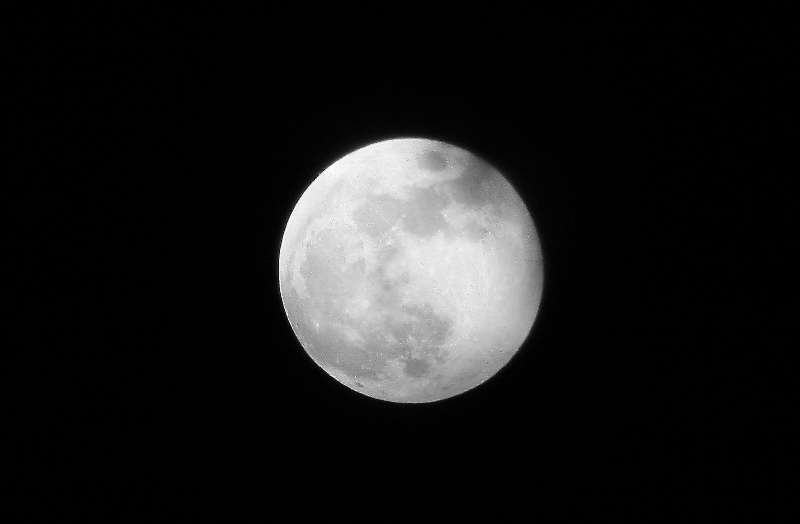
22h10 - 1/500 (the shadow upper right come from tree leafes. At the bottom the faint penumbra is visible.)
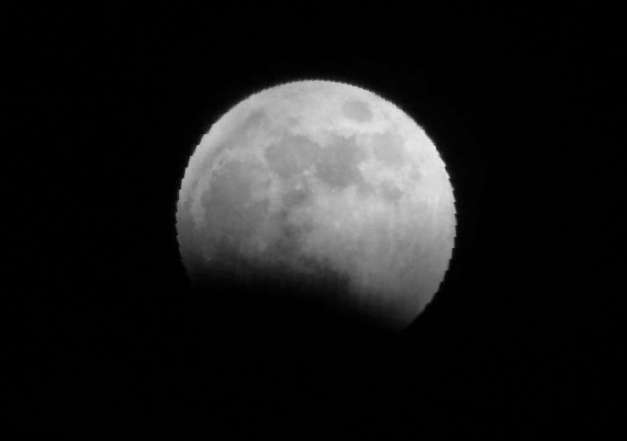
22h44 - 1/500

22h53 - 1/500
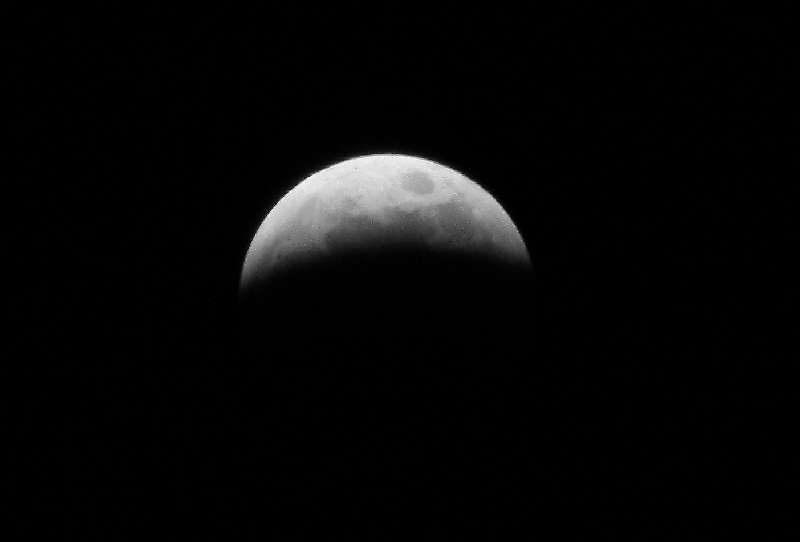
23h17 - 1/250
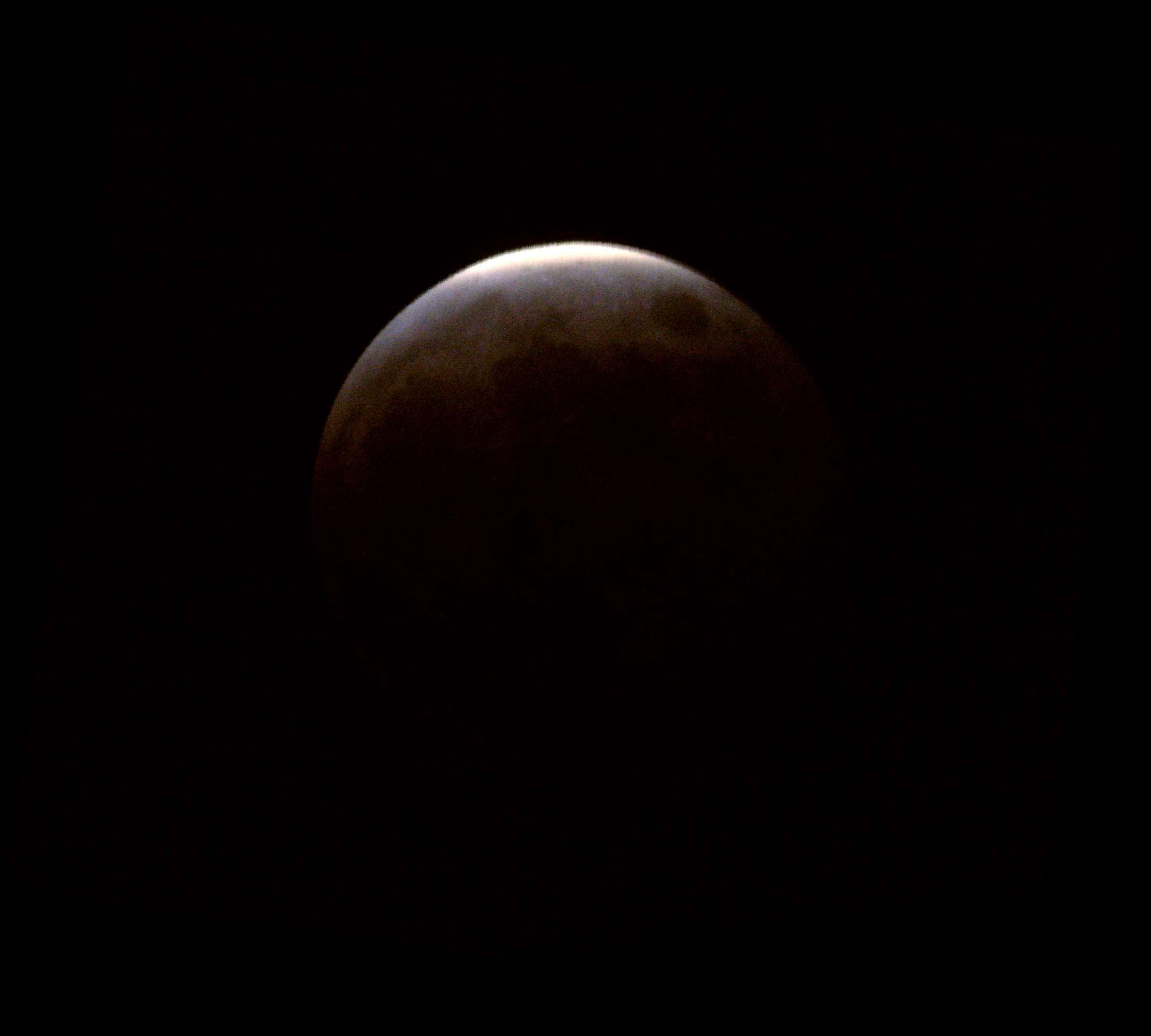
23h427*
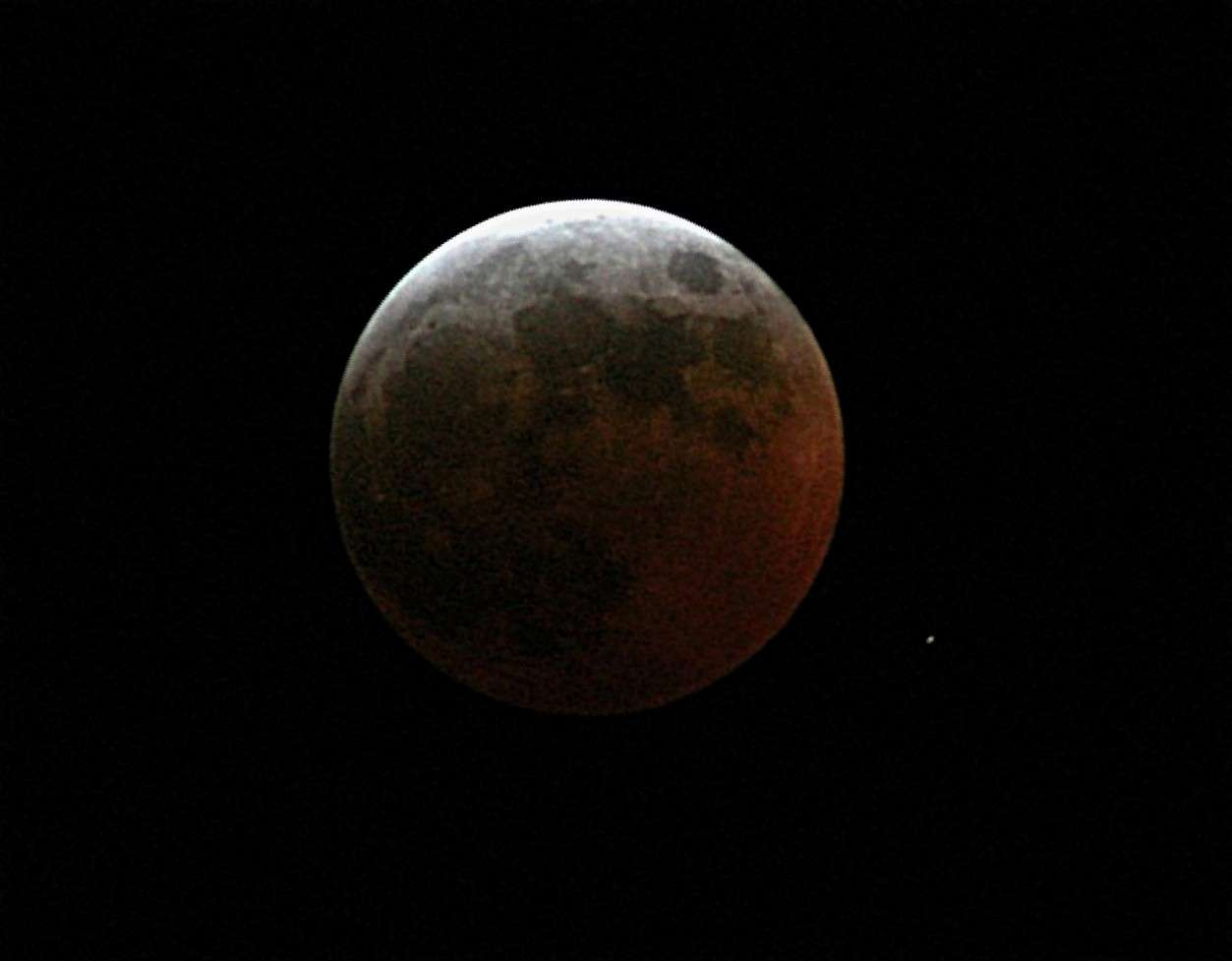
23h45 - 1/2
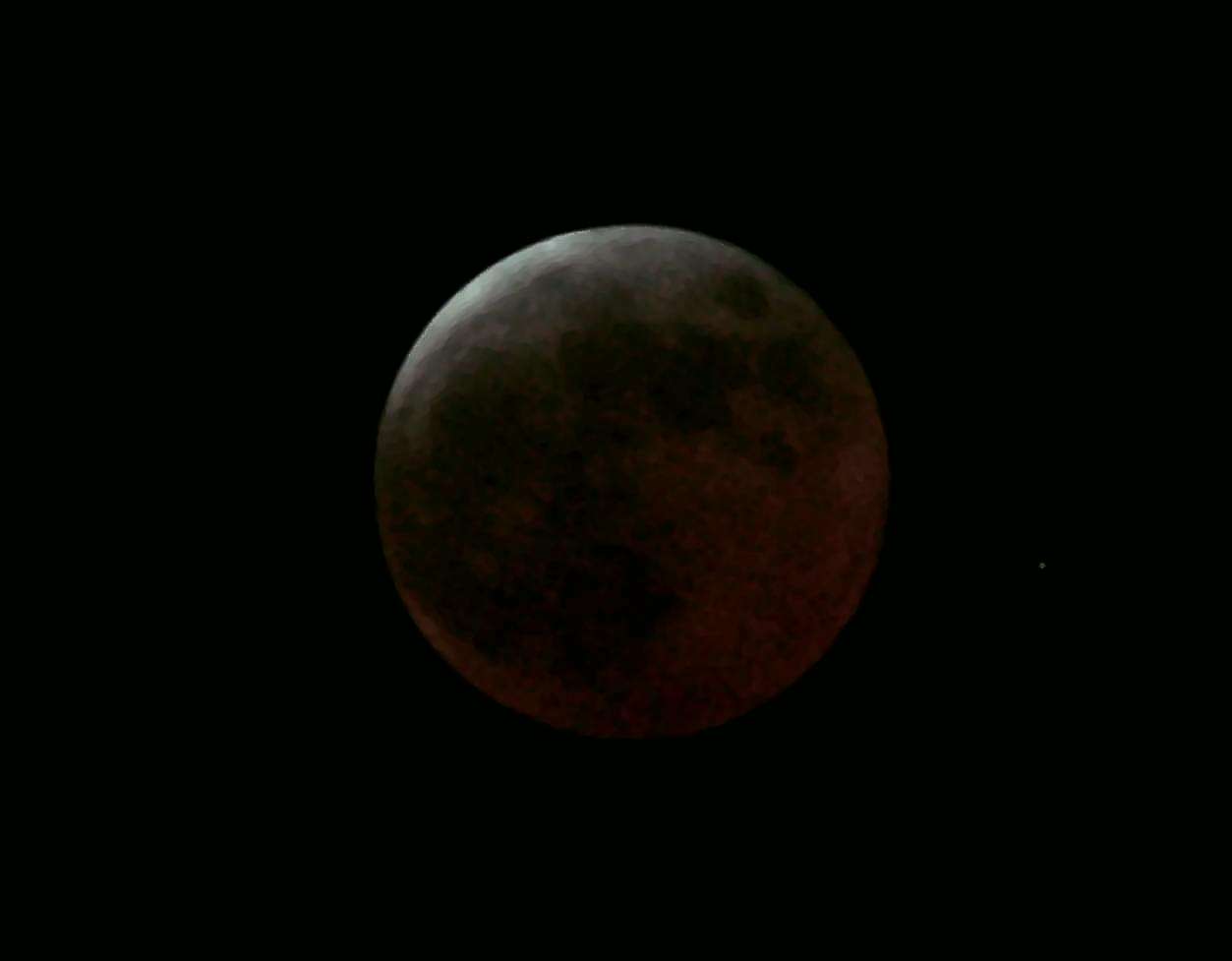
0h16 - 1/4
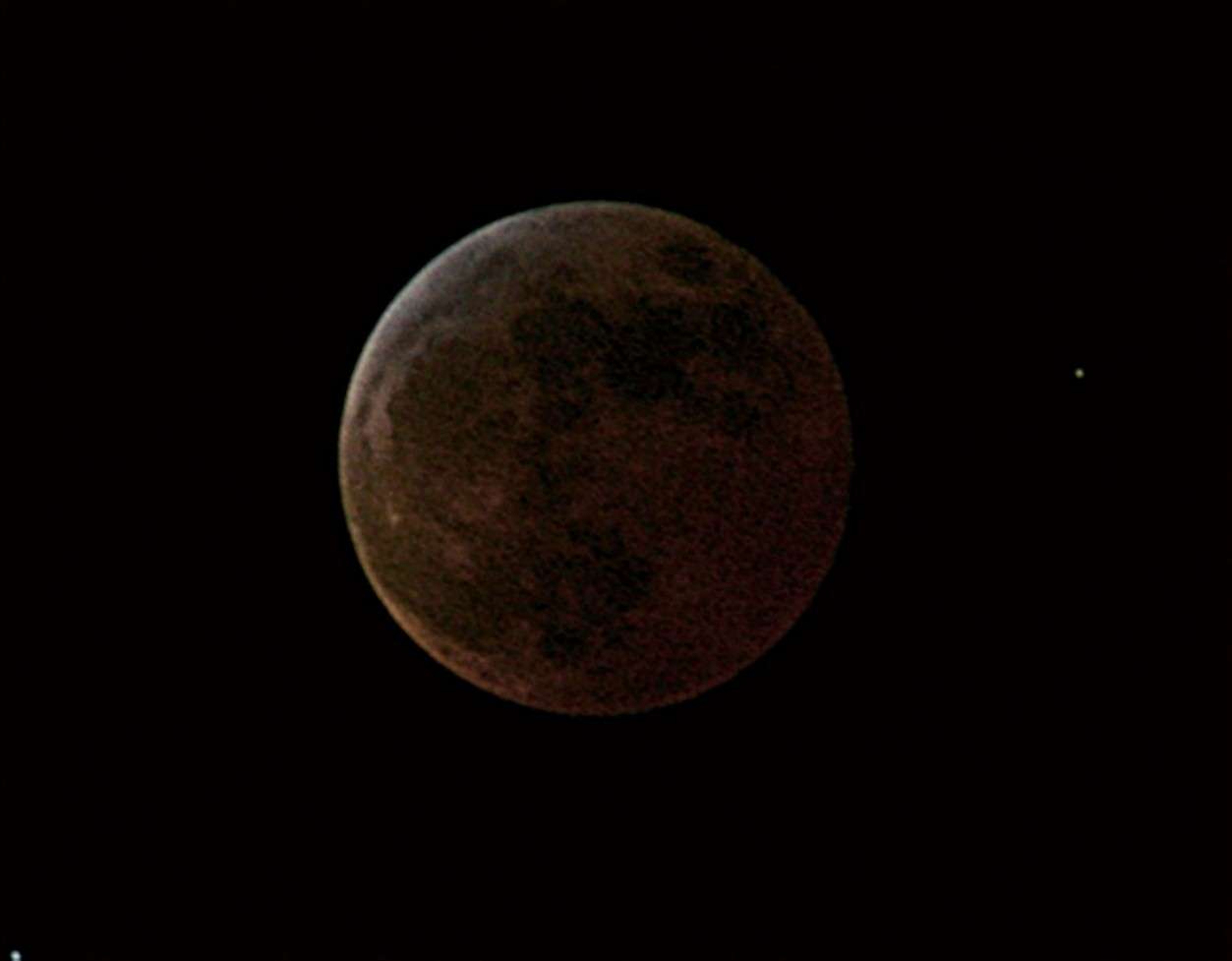
00h24 - 1 sec.
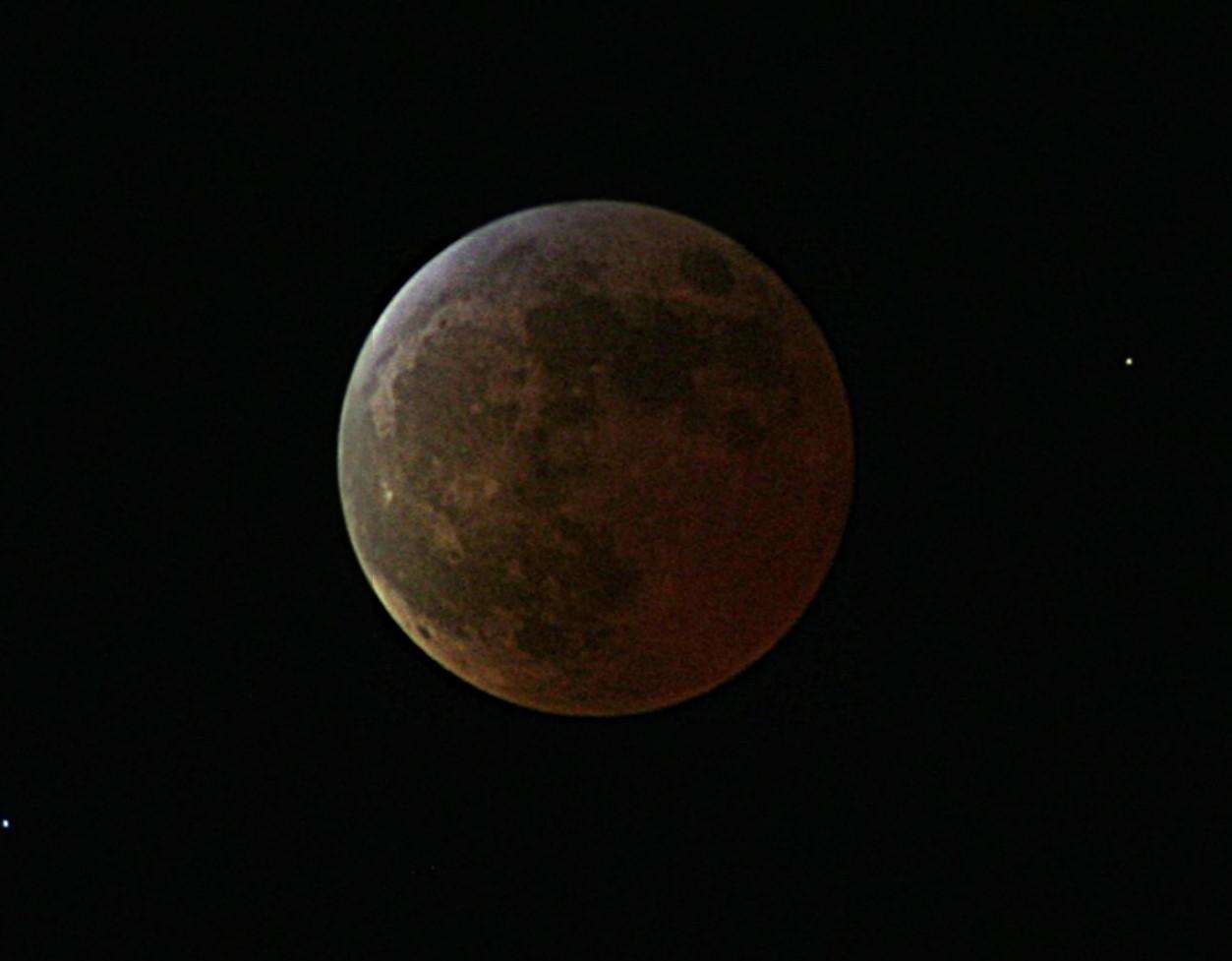
00h36 - 1/2
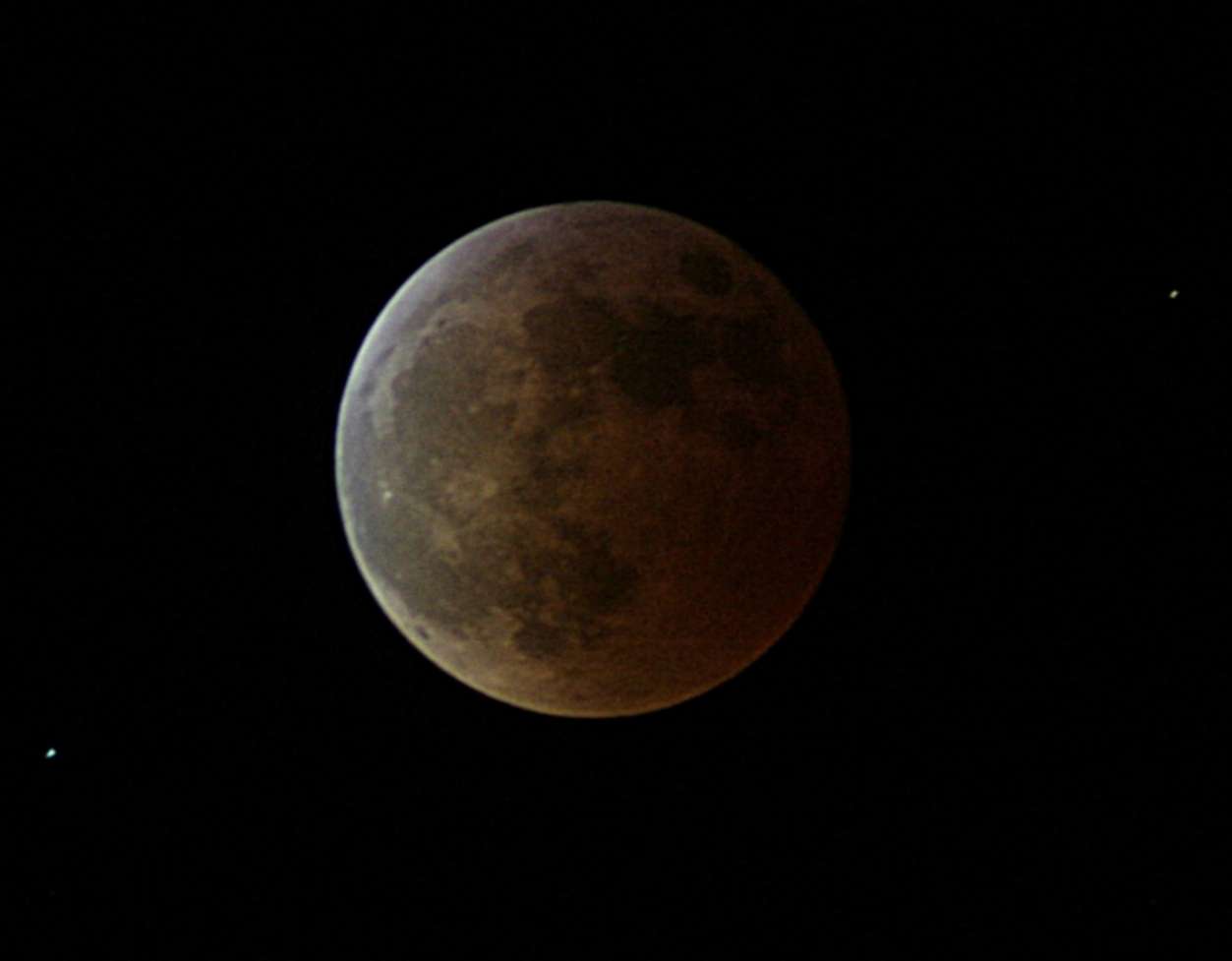
00h49 - 1/2
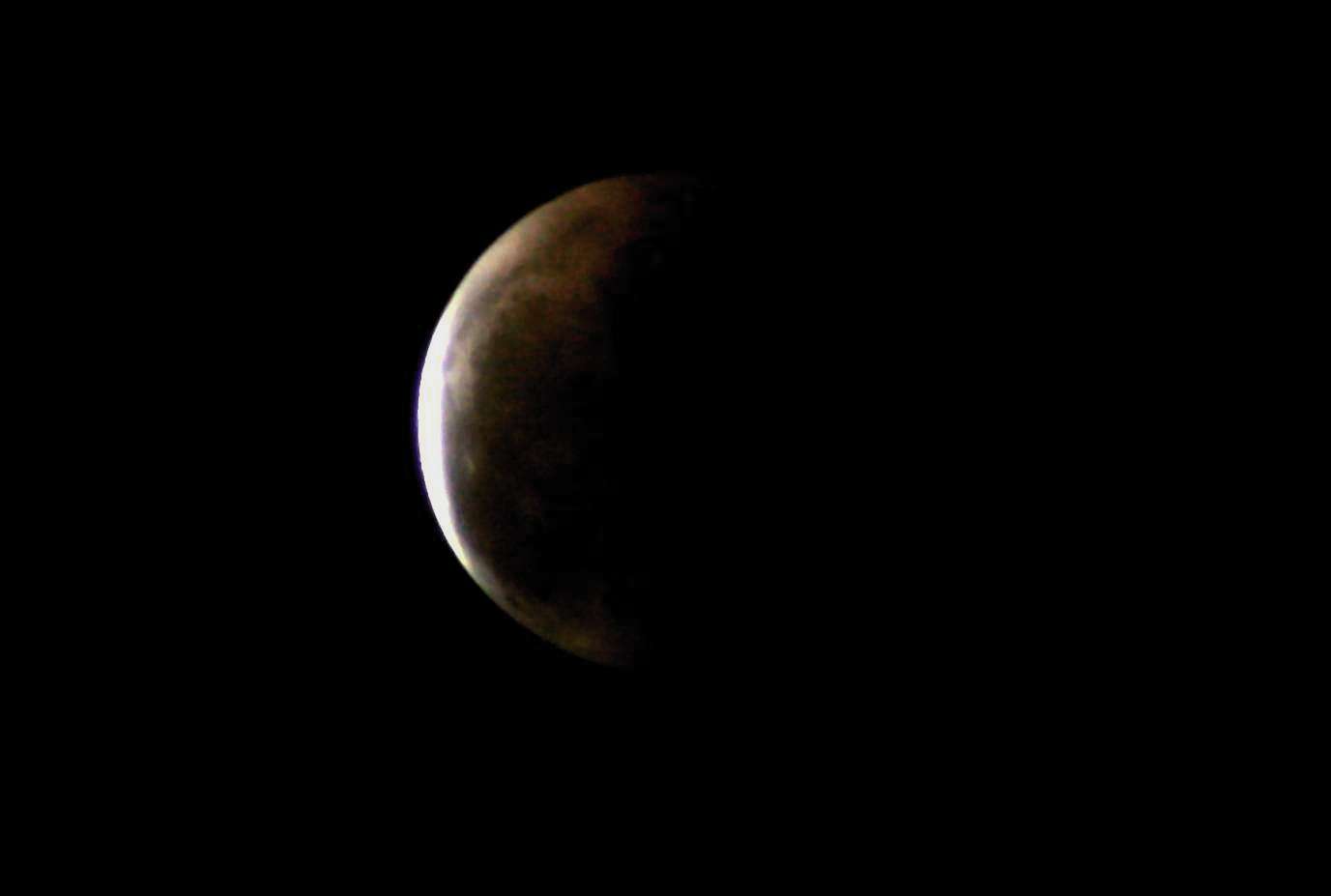
01h01 - 1/6
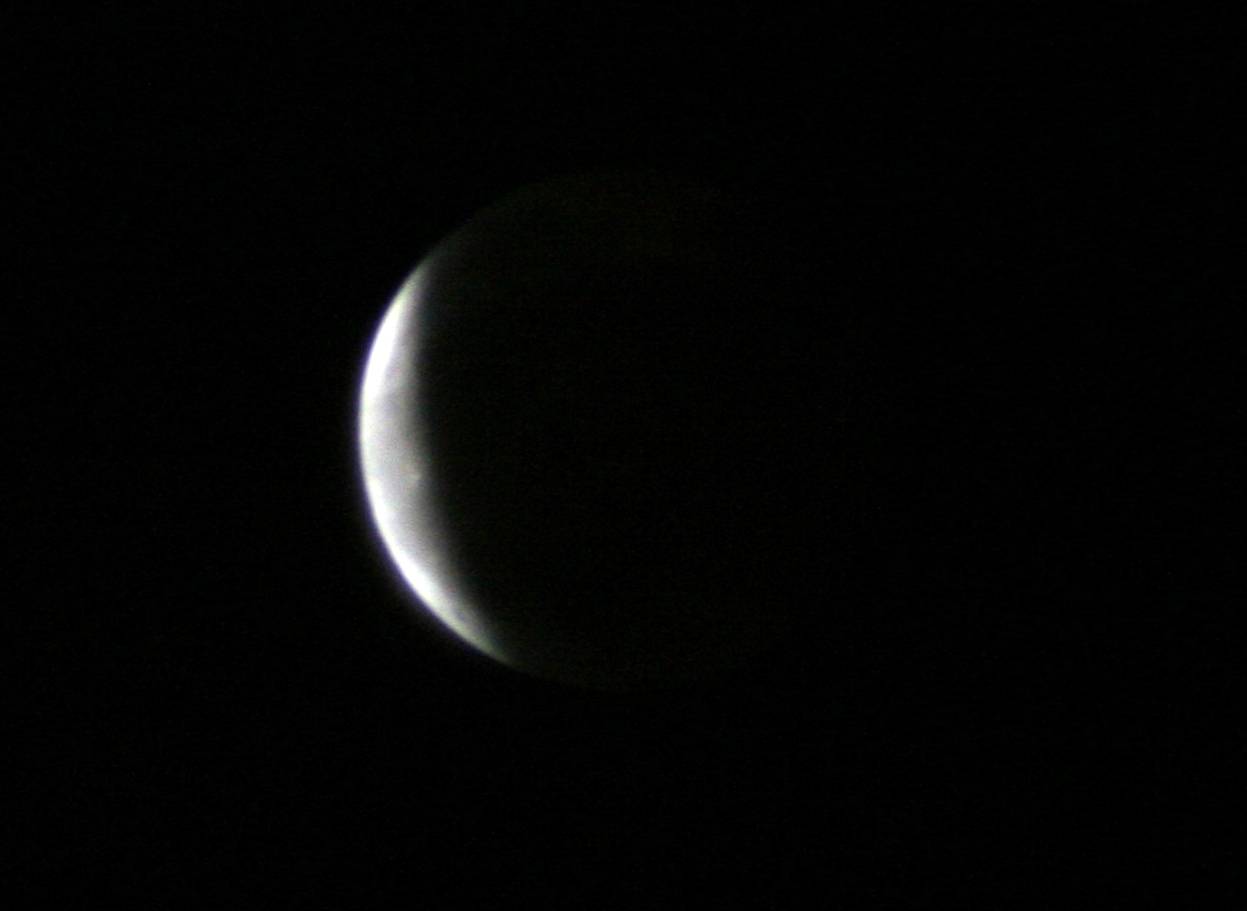
01h09 - 1/6
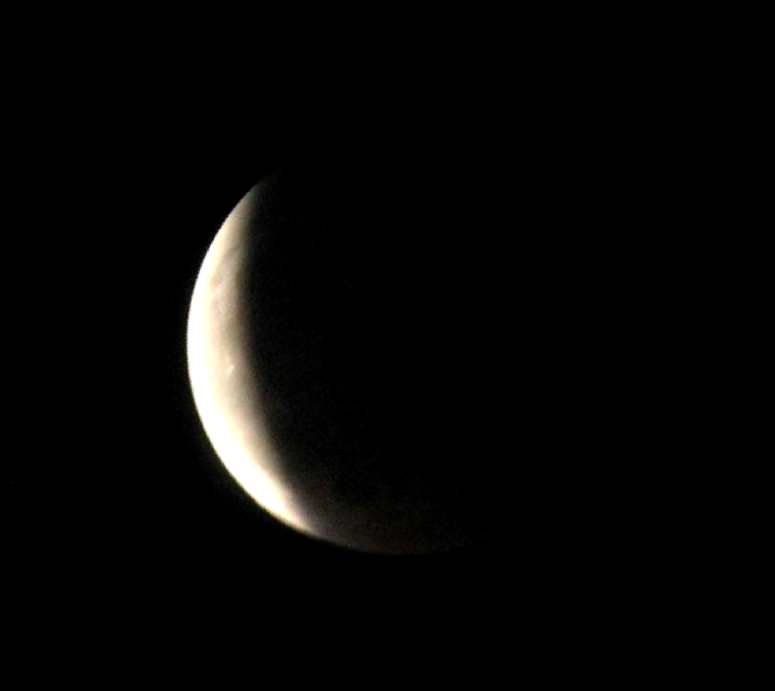
01h13 *